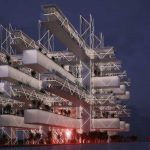Located within New Zealand’s Abel Tasman National Park, the Awaroa Lighthouse operates at extremes by revealing the tensions hidden within an image of stability. Addressing the lighthouse for both its architectural typology and its imagistic quality, this work situates architecture in the volatile mid-point between the otherworldly beauty of the New Zealand landscape, and an anxiety of destroying it latent within its national psyche. Recording both immaterial data flow from a worldwide network, and material seismic data from a local network of telemetric rods at its base, this work questions the extremity of human influence for the sake of preservation.
Architects: Nick Roberts, Henry Stephens and Jansen Aui
Location: New Zealand
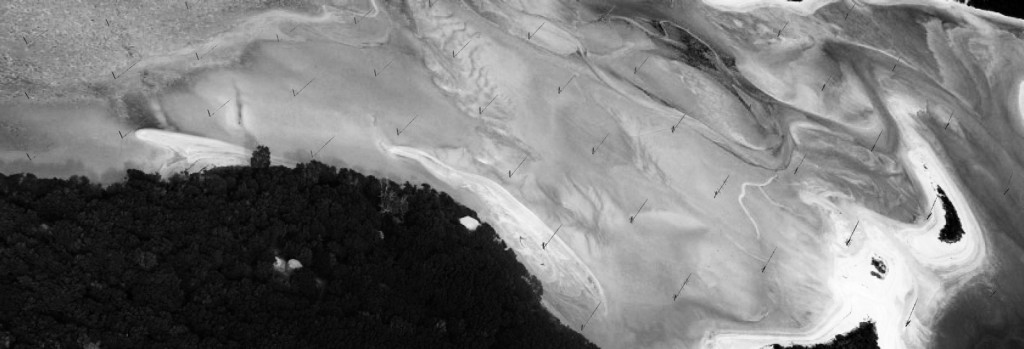
Historical citation for the project belongs to the lighthouse, which is addressed as both an architectural typology for inquiry, and for its imagistic quality. Historically pictured amidst precipitous coastline and shrouded by violent waters, its solidity, stability and reassuredness within its siting becomes the idyllic reference point for the vertical structure romanticised on shaky ground. This work operates across boundaries of destruction, preservation and renewal – ensuring a dramatic integration between building and landscape.
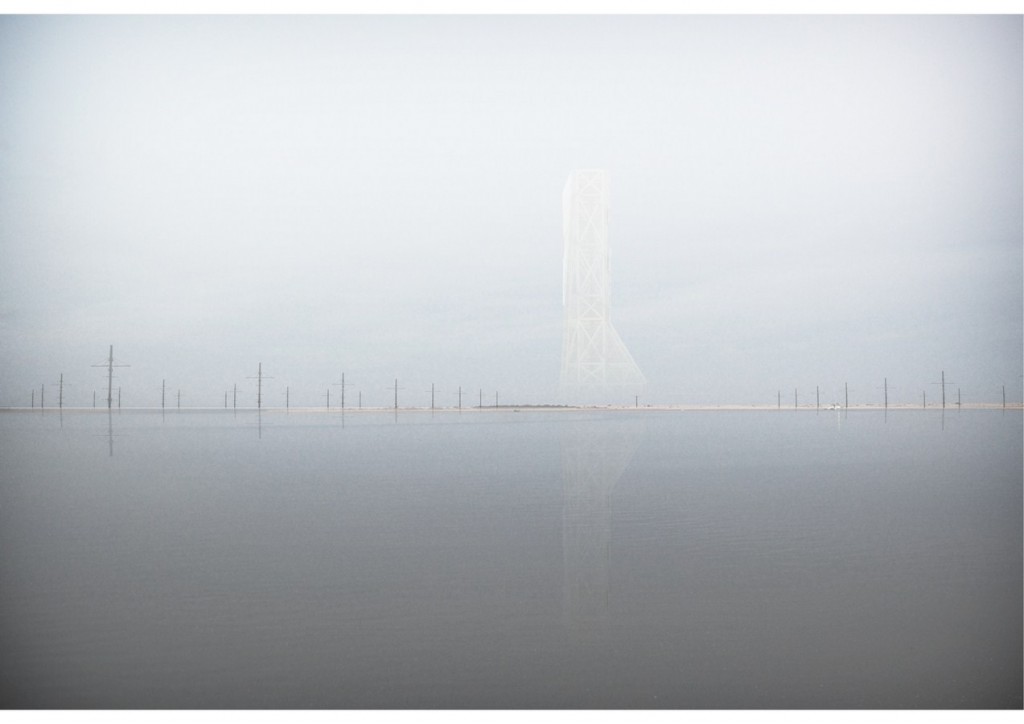
Functionally, the historical processes of the lighthouse as a navigational, directive, and organisational structure are re-imagined here as a symbol of foresight in the event of an earthquake or related natural disaster. The tip of the tower embraces the immaterial data flow of recent technological advances – an above earth recording of satellite photography from a global network of similarly earthquake-prone sites. Materially, a network of telemetric rods radiating across the site, alongside a primary drill at the base of the tower record beneath earth: tectonic and soil movement, seismic noise and electromagnetic waves. In-between, a single residence for a nominated ‘lighthouse keeper’ is provided, where the streams of data from both sources can be consolidated into an anticipatory forecast. At this extreme, the architectural system shifts from its passive, ‘recording’ state to its active, ‘protective’ state: a dormant system within the telemetric rods distributes sand on site into a network of huge, staggered ‘sand walls’ between the outermost rods, defending and preserving the landscape within.
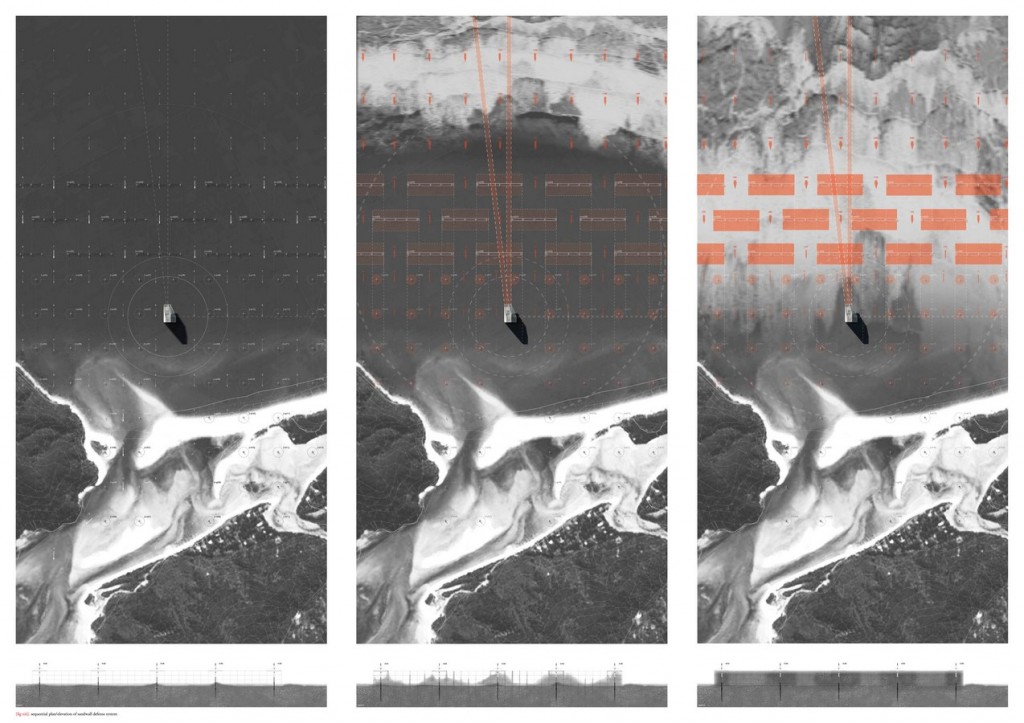
Formally, the geometric composition of the tower enfolds its functional concepts in exposing a play of opposites. It generates a tension between an image of stability, in a phenomenal sense, versus the reality of fragility, in a literal and tactile sense. Thus, extremities recur within the perceived formal shifts in the building – it is at once austere, monolithic, even muscular when confronted in one elevation, however a shift in viewline reveals the mass as potentially fragile, susceptible to decay and weather. In the distance, no sign of occupation can be read but for the giving way of one surface expression to another. Within, traditionalist concepts of structure are inverted or emphasised in a play of anchors and cantilevers, interrupted and dislodged views, and disproportionate scale that is never easily absolved. These are purposeful absurdities, given our interest in anxiety as a headspace and more importantly, an activator for a designed architectural experience. Operating at the precipice of destruction and renewal, this project asks at what point an alien influence in the benevolent order threatens to figuratively destroy what it is designed to functionally preserve.
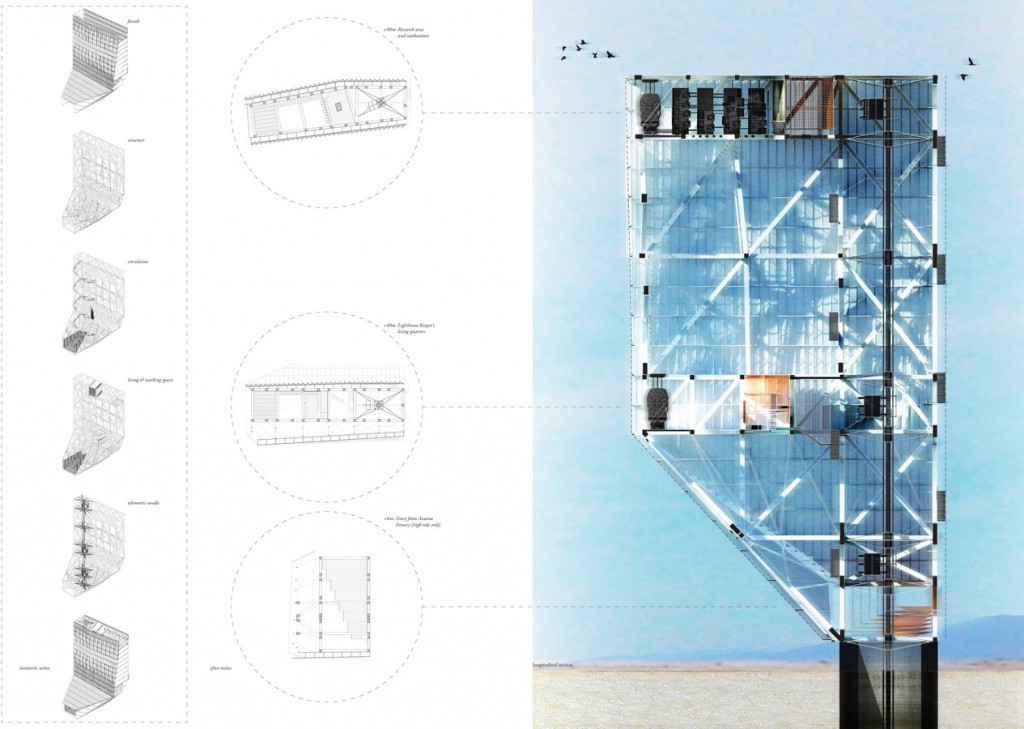
As day passes into night, the tower within the landscape fluctuates between functional and symbolic states. Illuminated from within as the darkest hours emerge, the structural exoskeleton is given an imagistic emphasis and weight. After Vidler [1992: 168], here we are referencing concepts of light as arcane as they are socio-culturally embedded in our nature. Engaged in both its physical and metaphysical contexts – the lighthouse remains a beacon in the always-recurrent dark, as it always was, and with it all our internalised understandings of its symbolism: of foresight, and of knowledge, even where the endgame is most unwritten.

Awaroa Lighthouse is a project interested in collective memory and prevailing emotional undercurrents; in parallel narratives, over time, space and scale, teetering between the softness of a gesture, and the hardness of a fact.

